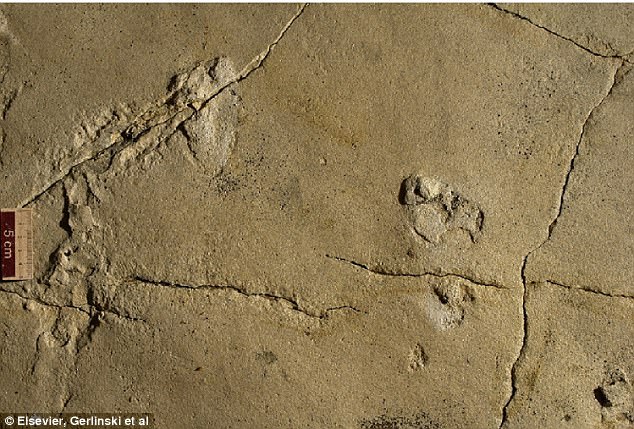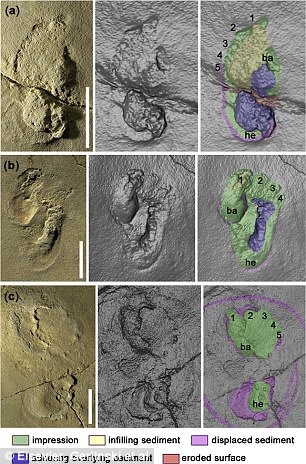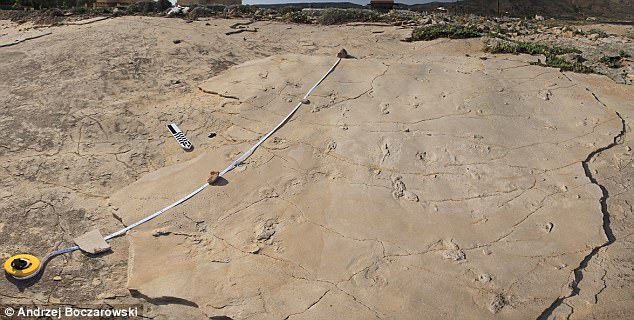
In the annals of scientific discovery, few findings have the potential to rattle established theories as profoundly as the unearthing of ancient footprints. Such was the case when a trail of fossilized footprints dating back 5.7 million years was unearthed in the rugged terrain of Crete, a revelation that threatened to rewrite the narrative of early human evolution.
Unlike the footprints of their primate counterparts, these ancient imprints bore a striking resemblance to modern human feet, complete with a distinct big toe and a sole marked by a prominent “ball” absent in ape footprints. The implications were staggering, suggesting that creatures with human-like feet roamed the earth far earlier than previously believed.
Professor Per Ahlberg of Uppsala University, a leading authority on the subject, was quick to underscore the significance of the discovery. “What makes this controversial is the age and location of the prints,” he remarked, acknowledging the seismic implications for our understanding of human origins.
For decades, the prevailing wisdom held that the cradle of humanity resided solely within the African continent, with all fossil evidence of human ancestors predating 1.8 million years originating there. Yet, the emergence of these ancient footprints in Crete challenged this notion, opening the door to the possibility of a far more complex evolutionary saga.
At the heart of the debate lay the question of the identity of the creatures who left their mark on the Cretan shores. Were they, as some hypothesized, an early branch of the hominin family tree, venturing beyond the confines of Africa? Or did they represent an entirely different lineage, a previously unknown primate species endowed with remarkably human-like feet?
The geological context of the footprints only deepened the mystery. Embedded within sedimentary rock formations dating back 5.6 million years, the prints offered tantalizing clues about a bygone era when the Mediterranean Sea briefly receded, exposing vast expanses of shoreline.
Comparisons with other fossil finds, such as the renowned Ardipithecus ramidus specimens from Ethiopia, provided further fuel for speculation. While these earlier hominins displayed a more primitive foot structure akin to apes, the Crete footprints hinted at a more advanced stage of bipedal locomotion.
As the scientific community grappled with the implications, one thing became clear: the story of human evolution was far more intricate and multifaceted than previously envisioned. Whether the ancient footprints of Crete would herald a paradigm shift in our understanding of our origins remained to be seen, but one thing was certain: they had left an indelible mark on the landscape of evolutionary science.


RELATED ARTICLES
- EU conservative leaders Meet in Romania for Reelection and Victory lap
- EU Approves Digital ID, Greece Becomes First to Adopt the Law
- Egyptian gunman shoots dead 3 ex-coworkers at Greek shipping company
- Seniors to be fined for violating vaccine mandate
- Greece Announces Mandatory Vaccinations for Old people or 100 Euros Fine per Month











